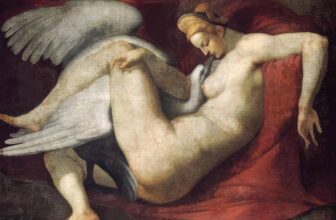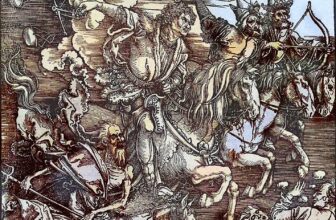Parmigianino’s Most Famous Paintings
Shopping Ads: Invest in Hidden Masterpiece: Rare Antique Oil Paintings For Sale. Limited Originals Available 💰😊 Are you looking for authentic hidden masterpiece? Explore old master antique oil paintings from the Renaissance and Baroque eras. From 16th-century portraits to 18th-century landscapes. Authenticity guaranteed, Old Master antique oil paintings for sale. Shop Now! 🎨 Renaissance And Baroque Art Old Master Portrait Paintings Landscape Antique PaintingsWhen you dive into the shimmering world of Italian Renaissance art, names like Leonardo da Vinci, Michelangelo, and Raphael often steal the spotlight. But nestled just beyond the towering giants of the High Renaissance is a singular artist whose graceful style and exquisite elongation of form marked a profound shift in art history: Parmigianino. A painter whose works shimmer with elegance, sophistication, and a mysterious allure, Parmigianino’s legacy continues to captivate art lovers and historians alike. This post unravels the story of Parmigianino, his most famous paintings, the value of his work, and the legacy he left behind.
The Story of Parmigianino: A Prodigy of Elegance
Born Girolamo Francesco Maria Mazzola in 1503 in Parma, Italy, Parmigianino’s nickname literally means “the little one from Parma.” From an early age, it was clear he was no ordinary artist. Parmigianino began his artistic journey under the guidance of local painters but quickly showed a talent that transcended regional boundaries. By his late teens, he was deeply influenced by the Renaissance masters but was soon to take a dramatically different path.
Parmigianino’s career unfolded during a turbulent time in Italy, marked by political upheaval and the ever-shifting tastes of patrons. However, his unique style, a sophisticated blend of elongated proportions, graceful figures, and an almost ethereal refinement, would set him apart. This style became a hallmark of the Mannerist movement, a phase that bridged the High Renaissance’s balance and harmony with the Baroque’s emotional intensity.
Despite his short life, Parmigianino died young at age 37 in 1540, his body of work remains remarkably influential. He was more than a painter; he was also a printmaker and an innovator, experimenting with perspective and form in ways that were ahead of his time.
What is Parmigianino Known For?
Parmigianino is best known for his mastery of the Mannerist style, characterized by:
Elongated forms: His figures often have elegant, stretched limbs and necks, which give them a graceful, otherworldly appearance.
Complex compositions: He played with unusual perspectives and poses that challenge the viewer’s perception.
Refined beauty: His portraits and religious scenes radiate a delicate beauty with a touch of sensuality and mystery.
Innovative use of light and color: His palette and lighting often create an ethereal atmosphere.
One of his most revolutionary achievements was his reinterpretation of traditional subjects. Instead of the balanced harmony of the High Renaissance, Parmigianino’s works feel more stylized and emotionally charged.
Parmigianino’s Most Famous Paintings
While Parmigianino’s oeuvre is not as vast as some of his contemporaries, his paintings are iconic treasures that define Mannerism. Below are some of his most famous works:
1. “Madonna with the Long Neck” (c. 1534–1540)
Undoubtedly Parmigianino’s most renowned painting, this masterpiece is a prime example of his Mannerist style. The painting depicts the Virgin Mary holding the Christ child, but with dramatically elongated necks and limbs. The disproportionate scale, Mary’s unnaturally long neck and fingers, has fascinated art critics and audiences for centuries. The composition feels both ethereal and unsettling, emphasizing grace over anatomical accuracy.
Today, it is housed in the Uffizi Gallery in Florence, where it remains one of the museum’s most celebrated works.
2. “Self-Portrait in a Convex Mirror” (c. 1524)
A marvel of both skill and ingenuity, this self-portrait was painted on a convex panel, which distorts the image in a way that resembles a fisheye lens effect. Parmigianino’s delicate features and meticulous detail demonstrate his virtuosity. This piece is especially notable because it reveals his fascination with perspective and his desire to experiment beyond traditional formats.
The original painting is part of the Kunsthistorisches Museum in Vienna.
3. “The Vision of Saint Jerome” (c. 1526–1527)
This religious painting shows Saint Jerome in a contemplative pose, surrounded by angels and mystical elements. The elegance and spiritual intensity of the figures demonstrate Parmigianino’s ability to combine human emotion with stylized beauty.
It is housed in the National Gallery in London.
4. “Cupid Making His Bow” (c. 1533)
This smaller work illustrates the god Cupid, but with Parmigianino’s characteristic grace and elongated form. The youthful figure is delicate and almost fragile, embodying the idealized beauty that the artist often pursued.
This painting is in the collection of the Museo Nazionale di Capodimonte in Naples.
How Many Paintings Did Parmigianino Create?
Parmigianino’s lifetime was tragically short, limiting the total number of paintings he produced. Art historians estimate that he completed roughly 30 to 40 paintings, with many other works lost or attributed to his followers and workshop. Despite the relatively small number, the quality and innovation in these works have ensured his lasting influence.
He was also an accomplished draftsman and created numerous preparatory drawings and prints that shed light on his creative process. Many of these sketches survive and are studied for their fluidity and delicate line work.
What is the Most Expensive Painting of Parmigianino?
While precise sales records from the 16th century do not exist, the most valuable and famous Parmigianino painting by reputation and estimated value remains the “Madonna with the Long Neck.” Although it has never been sold in modern times (as it is a museum piece), its importance, size, and influence would place it among the highest-valued Renaissance paintings if it ever went to auction.
In recent times, smaller works and drawings by Parmigianino have occasionally appeared in auctions, fetching prices in the millions of dollars, reflecting his enduring prestige.
Parmigianino’s Legacy
Parmigianino’s legacy is both rich and complex. As one of the pioneering figures of Mannerism, he helped shift the trajectory of European art after the High Renaissance. His elongation of figures influenced generations of artists who sought beauty beyond naturalistic representation.
Key elements of his legacy include:
Influence on later artists: Parmigianino’s style resonated through the 16th and 17th centuries, impacting painters like Bronzino and El Greco, who admired his ethereal forms.
Innovation in technique: His experiments with perspective and distorted mirrors were groundbreaking.
Emblem of Mannerism: He became a symbol of the intellectual and stylistic transition in Renaissance art, embodying elegance and artificiality.
Drawings and prints: His work in prints helped disseminate his style across Europe, reaching artists beyond Italy.
Despite his relatively short career, Parmigianino’s work remains a critical chapter in art history, illustrating the tension between classical ideals and expressive experimentation.
Where Are Parmigianino’s Paintings Located Today?
Parmigianino’s paintings are scattered across some of the world’s most prestigious museums and collections, reflecting his widespread influence:
Uffizi Gallery, Florence: Home to the iconic “Madonna with the Long Neck.”
Kunsthistorisches Museum, Vienna: Houses the famous “Self-Portrait in a Convex Mirror.”
National Gallery, London: Exhibits “The Vision of Saint Jerome.”
Museo Nazionale di Capodimonte, Naples: Displays “Cupid Making His Bow” among other works.
Louvre Museum, Paris: Contains some drawings and paintings attributed to Parmigianino.
Pinacoteca di Parma, Parma: Holds several of his early works, connecting the artist to his hometown.
Additionally, some of Parmigianino’s works reside in private collections or smaller galleries around Europe, while many drawings and prints are preserved in art libraries and archives.
The Timeless Grace of Parmigianino
Parmigianino’s art is a testament to the power of innovation within tradition. His paintings embody a delicate tension, between naturalism and stylization, grace and distortion, reverence and sensuality. Through his elongated figures and enigmatic compositions, Parmigianino invites viewers into a world where beauty is both elevated and transformed.
Though his life was brief, Parmigianino’s impact on the history of art is enduring. From the haunting elegance of the “Madonna with the Long Neck” to the technical marvel of his convex mirror self-portrait, his works continue to inspire admiration and study.
In a world fascinated by perfection, Parmigianino dared to redefine beauty on his own terms, leaving behind a legacy as slender and striking as the figures he so masterfully painted.
If you ever get a chance to visit Florence, Vienna, London, or Parma, seeing Parmigianino’s work in person is a chance to witness the delicate poetry of Mannerism come alive, a timeless bridge between Renaissance clarity and the expressive futures yet to unfold.




